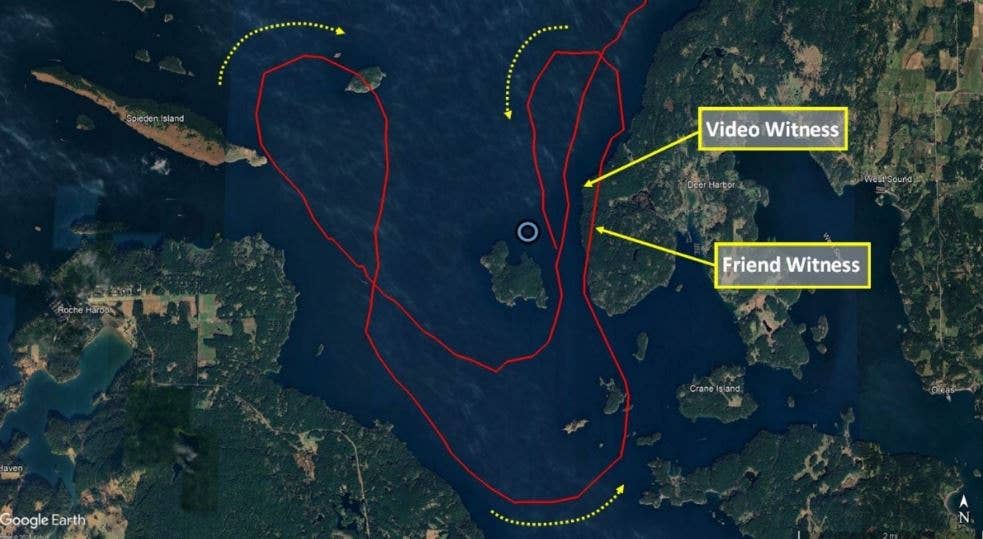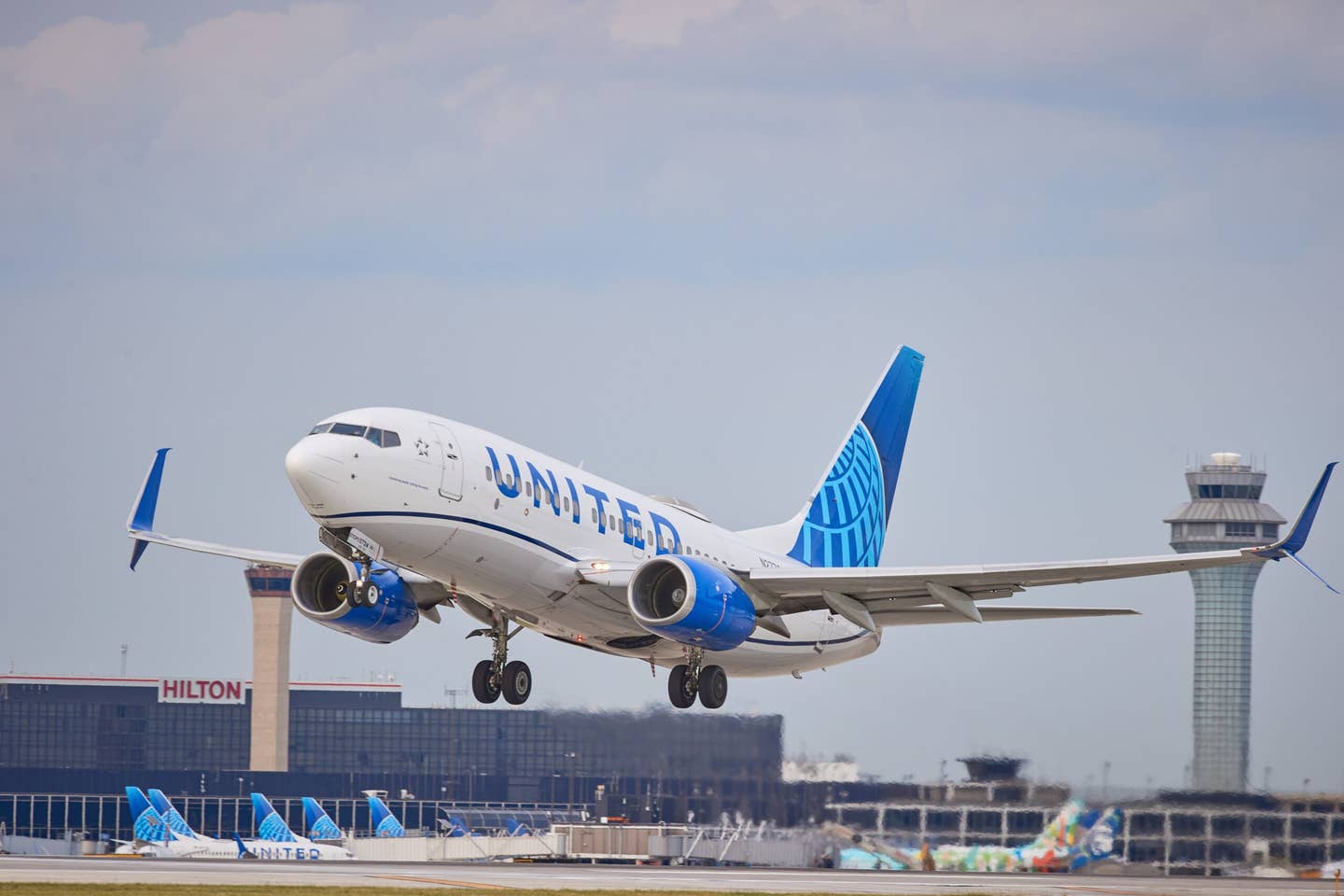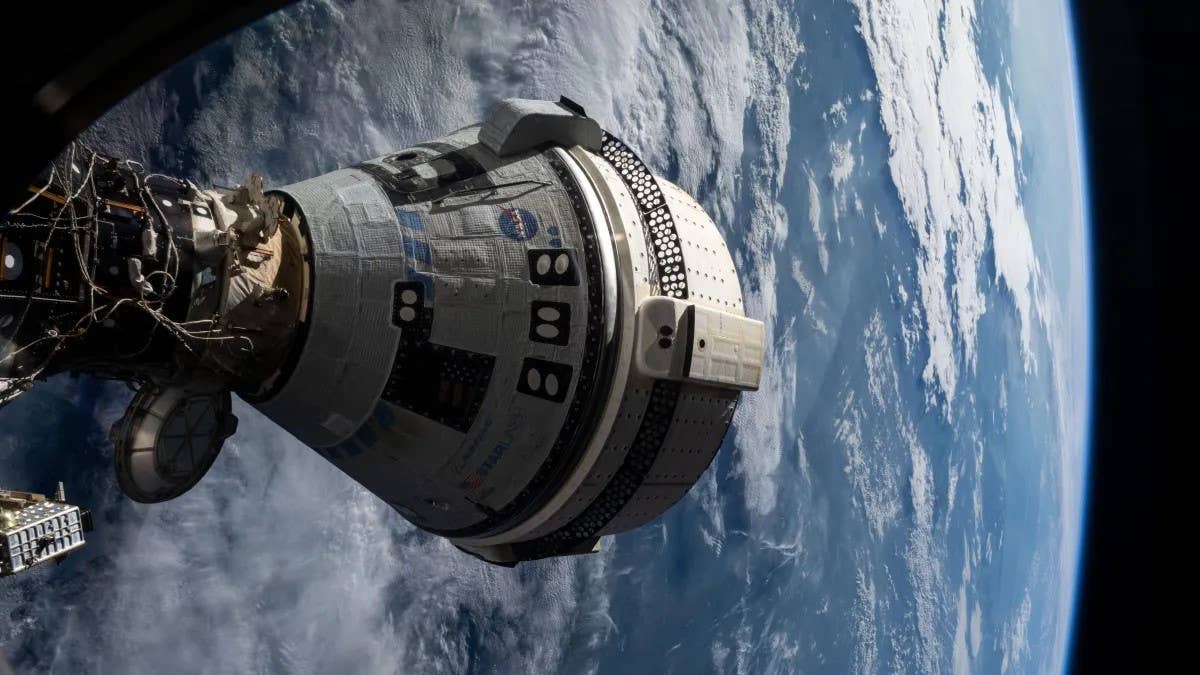NTSB: Witness Provides Details Leading Up to Fatal T-34 Crash
Former Apollo astronaut William Anders’ flybys of a friend’s home may have contributed to the crash, the safety agency said in a preliminary report.

In its preliminary report, the NTSB included an image of the accident site. The red line indicates the aircraft’s approximate track based on radar data. The blue circle denotes the location of the main wreckage. [Courtesy: NTSB]
Flybys of a friend's home may have contributed to the fatal crash of a Beechcraft T-34A Mentor that claimed the life of retired astronaut William Anders last month in Washington state, according to investigators.
Anders, 90, was a retired military pilot and Air Force major general, Apollo-era NASA astronaut, and founder of the Heritage Flight Museum.
According to the preliminary investigation published by the National Transportation Safety Board (NTSB), a friend told investigators that Anders sent her a text message before the June 7 morning flight stating he would be flying past her house at 11:40 a.m., which was close to his old residence located on the western shore of Orcas Island.
The witness said these flights were not unusual, although the accident flight was the first time he had performed it in 2024. The witness said that Anders would sometimes rock the wings of the airplane but did not perform aerobatic maneuvers.
Radar data provided by the FAA showed a target departing Skagit Bayview Regional Airport (KBVS) at about 11:13 the morning of the accident but did not include altitude data.
The target flew west toward Orcas Island and performed a series of passes back and forth along the coastline of the San Juan Channel.
The graphics provided by the NTSB report show the aircraft flying a route back and forth along the shoreline.
The friend told investigators that she heard the airplane, then a short time later she observed it overhead traveling north along the shoreline in front of her house. The aircraft then flew behind trees and out of view, and she could hear but not see what sounded like the airplane making a left turn to the south. The airplane came back into view, rolling out on a south heading.
"It was flying over the water but higher than the previous occasions," the witness told NTSB investigators.
After the aircraft passed, the witness saw the left wing drop, and she thought this was part
of his usual routine. However, the wing continued to drop as the airplane began to rapidly descend toward the water.
Another witness located along the same shoreline about a third of a mile to the north said he observed the aircraft from his deck. He began to record the aircraft with his phone.
"At the beginning of the recording the airplane was inverted with a slight nose down attitude and heading generally to the south,” the NTSB report said. “Over the next three seconds, the airplane had transitioned to an almost vertical dive. As the airplane approached the water, it began to pull out of the dive, now facing the opposite direction. By the time it had recovered to almost wings level, upright attitude, the airplane struck the water with its right wing tip and spun across the water on a northern trajectory."
Video of the event shows the aircraft being torn apart by the impact.
The NTSB said that these were the only witnesses to come forward with information. The final report on the accident is still months away.

Subscribe to Our Newsletter
Get the latest FLYING stories delivered directly to your inbox






